The Traditional Medical System Perspective
Long before the advent of modern conventional medicine, traditional doctors in the East and Western herbalists from the Vitalist and Eclectic traditions were using plants to help people overcome infectious acute diseases. The constellation of symptoms that the patient presented with were considered to be caused by the entrance of pathogenic influences into the body, and appropriate herbal remedies were administered to alleviate symptoms while addressing underlying constitutional imbalances.
At the opposite end of the spectrum, the focus of modern science is to define the specific cellular and molecular changes that take place in the presence of an infection. Research shows that certain immune modulating compounds are associated with viral infections and the resulting symptoms. For example, the induction of interferons (IFN’s) is associated with host immunity and accounts for some of the host symptoms associated with infections, such as muscle aches and soreness. And studies show that NF-kappaB, another immune modulating compound, stimulates replication of acute viruses and is actually obligatory for viral replication.

The goal of traditional medicine is to target the virus with herbs known to inhibit viral replication, to provide additional immune support with herbs specific to acute infections, and to provide the body with herbs that down-regulate the overactive immune response referred to as the ‘cytokine storm’.1 As well, many herbal compounds are effective at reducing NF-kappaB.2,3
My Top Herbal Recommendations for Viral Infections
Propolis
A resinous material collected by honeybees from plants, propolis is used by bees to seal their hives, and to prevent diseases within the hive. The natural antimicrobial compounds in propolis make it an excellent infection fighter and healing agent. I recommend propolis for colds, flu, sore throat, sore or infected gums, digestive tract problems including ulcers, and topically for wounds, infections, rashes and sores.
As one of my favorite remedies for easing sore throats, I include propolis as a primary botanical ingredient in my protocol for colds and flus. The antiviral properties of propolis help to fight the virus, and the sticky resin adheres to the mucous membranes in the throat, delivering the antiviral action precisely where the cold and flu viruses take hold and multiply. Propolis has the additional benefit of having mild analgesic and anesthetic properties.
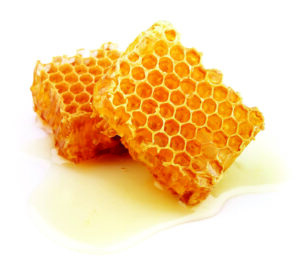
Studies have shown that propolis suppresses the interleukin 6-induced phosphorylation of signal transducer and STAT3, an essential cytokine-activated transcription factor in T helper 17 (Th17) development. Th17 are a subset of pro-inflammatory T helper cells defined by their production of interleukin 17 (IL-17). Researchers note that the action mechanisms of propolis on Th17 differentiation could be instrumental in controlling disturbed cytokine networks in inflammation, autoimmune diseases, and infections.4
Two medical journal articles document the activity of propolis specifically against Staphylococcus aureus, the bacterium that causes dangerous and often deadly surgical infections, blood poisoning, and a type of pneumonia. Five to ten percent of all patients hospitalized in the United States develop such infections, and S. aureus has become resistant to all but one pharmaceutical antibiotic. In a Chinese study, researchers found that extracts of propolis—specifically, sinapic, isoferulic, and caffeic acids—inhibited the growth of S. aureus.5 A European study reported that ethanol extracts from propolis had a marked synergistic effect on the anti-staph activity of two antibiotics, streptomycin and cloxacillin, and a moderate effect on several others.6
Another scientific investigation found that propolis inhibits the activity of several streptococcal bacteria species that cause dental caries. Japanese researchers reported that propolis-fed laboratory rats had far fewer caries than those given a regular diet, finding that propolis protected specifically against Streptococcus mutans and several other strep species. These strep species are closely related to the germ that causes strep throat.7 Ethanolic preparations of propolis have been shown to be active against Staphylococcus aureus (ATCC 25923) and to a lesser extent against Pseudomonas aeruginosa (ATCC 27853).8
In yet another study, propolis extract was found to possess pronounced virucidal effect against herpes simplex viruses type 1 and type 2, and to also interfere with virus adsorption.9
Elderberry/Elder Flower (Sambucus nigra)
The flowers, berries, and inner bark of the elder shrub have been used since antiquity in herbal medicine. The berries are rich in vitamin C and a wide range of important flavonoids, including quercetin and anthocyanins, which are believed to account for the therapeutic effects. The flowers contain flavonoids, such as anthocyanins, carotenoids, essential oil, mucilage, and tannins.
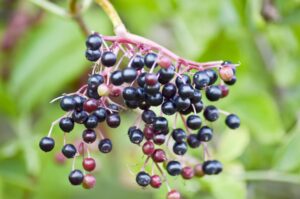
Elderberry extract is used as a tonic to alleviate many cold and flu symptoms including runny nose, cough, sore throat, fever, and muscle pain. Recent research shows that the berry extract increases the IFN-β inducing activity of L. acidophilus in dendritic cells, which suggests antiviral and immune-enhancing activity.10
Israeli scientists have been at the forefront of researching the benefits of elderberry extract, particularly on flu viruses. Virus cells take over healthy cells by puncturing cell walls with tiny spikes called hemagglutinin. These spikes are coated with an enzyme called neuraminidase, which aids in breaking down cell walls. But compounds in elderberry inhibit the activity of neuraminidase and disarm the spikes by binding to them, which thwarts the virus and prevents it from invading cells.
In one well designed Israeli study, researchers tested a standardized extract of the berry (Sambucol) on 40 people and noted a significant improvement in symptoms of the flu or a complete cure in approximately 90 percent of cases within two to three days, compared to six days for a control group. During the convalescent phase, blood tests showed a higher antibody level to influenza virus in the Sambucol group than in the control group.
“No satisfactory medication to cure influenza type A and B is available. Considering the efficacy of the extract in vitro on all strains of influenza virus tested, the clinical results, its low costs, and absence of side-effects, this preparation could offer a possibility for safe treatment for influenza A and B,” concluded the researchers.11,12 Another recent study stated that, “The H1N1 inhibition activities of the elderberry flavonoids compare favorably to the known anti-influenza activities of Oseltamivir (Tamiflu; 0.32 microM) and Amantadine (27 microM).13
Other studies show that elder flowers reduce fever and promote sweating, and a unique protein found in elderberry acts as a messenger regulating immune response.14 Elderberry extract inhibits infectious bronchitis virus at an early point during replication, probably by rendering the virus non-infectious.15
Boneset (Eupatorium perfoliatum)
Boneset is native to North America, where it was traditionally used by Native Americans to treat, as its name suggests, “break-bone fever” (Dengue fever). Infusions were also used to treat colds, fever, and pain from arthritis and rheumatism. Boneset attained popularity in about 1800 when a particularly virulent flu, characterized by intense bone pain, swept the East Coast. The plant induces profuse sweating which breaks the fever, which in turn relieves the intense aching pain associated with the flu. Boneset also thins mucus secretions, helping to break up lung congestion.
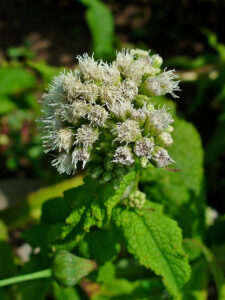
Boneset was one of the most important remedies used by the Eclectic Physicians for the treatment of colds and flus. Harvey Felter, MD wrote this: “Boneset is an admirable remedy to break up a common cold, especially when accompanied by deep-seated, aching pain. In every epidemic of influenza, it has been used with great advantage. During the severe pandemic of 1918-19 it was one of the safest and most successful remedies employed and contributed much to the successful management of the disease under Eclectic treatment. By many it came to be used as a prophylactic, persons taking it freely apparently escaping attack.”16
In a 2013 study, researchers evaluated the immunomodulatory activities and protective effect of Eupatorium polysaccharide against the highly pathogenic H5N1 subtype influenza virus. They found that Eupatorium polysaccharide has immunomodulatory properties and is a potential prophylactic against H5N1 influenza infection.17 In additional research, the ethanol extract of boneset has shown cytotoxic and antibacterial effects.18,19
Forsythia (Fructus forsythia)
Forsythia (Lian Qiao) is a Chinese medicinal herb in the category of herbs that Clear Heat and Clean Toxins. In TCM terms, its primary function is to eliminate Wind-Heat or early stage febrile disorders. It is often combined with Lonicera in the classic formula “Yin Qiao San”, which is often used at the first sign of a sore throat in a Wind-Heat disorder, such as at the onset of a cold or flu. It is very effective for eliminating the Heat Toxins associated with sore throats and is also known to protect the heart from Heat in the Lungs that may easily be transferred, leading to insomnia and restlessness.20
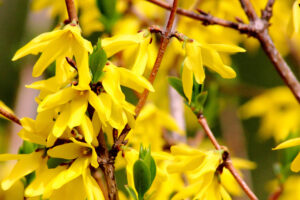
The essential oil of Forsythia has demonstrated inhibitory effects against Staph. aureus, Diplococcus pneumoniae, Bacillus dysenteriae, alpha-hemolytic Strep., and many other infectious organisms, including several types of influenza.21
Honeysuckle (Flos lonicera)
Honeysuckle (Lonicera), referred to as Jin Yin Hua in Traditional Chinese Medicine, is also used to treat Wind-Heat disorders and is categorized as an herb that Clears Heat and Cleans Toxins. Lonicera possesses diaphoretic properties and is used to Clear Heat in various stages of febrile disorders. It also has the ability to vent Heat from deeper layers of the body outward. Because Lonicera can address deeper layer Heat, it is not only useful for the sore throat, fever, thirst, and perspiration associated with an external disease, but is also beneficial for internal Heat and Toxins manifesting with high fever, strong thirst, and more severe sore throat.
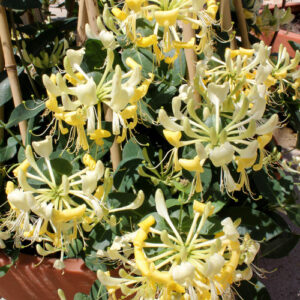
Lonicera has anti-bacterial, anti-inflammatory, and antiviral actions. It has demonstrated a broad spectrum of inhibitory actions against Staphylococcus aureus, beta-hemolytic streptococcus, and other infectious agents and has shown anti-inflammatory and antipyretic effects in mice and rabbits. Several studies have indicated that Lonicera can prevent or shorten the duration of colds and flus.22-24
Yarrow (Achillea millefolium)
Yarrow is a common, prolific, and humble herb that possesses immense and diverse healing value. Traditional healers have long recognized the numerous pharmacological properties of yarrow, which include anti-inflammatory, antioxidant, antibacterial, and antiviral properties.25
Yarrow is a classic diaphoretic, and is traditionally combined with boneset, elderflower, and peppermint for easing the fever that accompanies flus. It diffuses and channels heat by inducing perspiration, an essential process for quickly overcoming fever. In addition, the anti-inflammatory and antiviral properties of yarrow help to fight viruses.
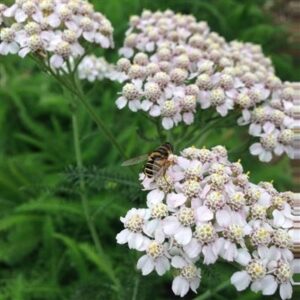
Recent studies show that yarrow extract possesses antiviral activity against Newcastle disease, which is a deadly viral disease in the poultry industry.26 Yarrow extract has also been shown to exert potent anti-rotaviral activity (a common cause of gastroenteritis) after viral adsorption.27
Controlling the Inflammatory Cascade
It is essential to provide herbal support during an infection to buffer the many cellular pathways that are altered during both acute and chronic inflammation.
Andrographis extract (50% andrographolide)
Andrographolide (AG) is isolated from the plant of Andrographis paniculata and used in traditional medicine for treating viral infection, diarrhea, dysentery and fever.
In two parallel group clinical studies, using Andrographis paniculata (as a fixed proprietary preparation known as Kan Jang) versus amantidine in patients with influenza showed increased recovery and reduced post-influenza complications. Several studies evaluating andrographis and the common cold demonstrated improvement within two to four days of treatment. The immune stimulating properties of andrographis appear to be derived from antibody activity and phagocytosis by macrophages.28,29
In Conclusion
Botanical medicine has a great deal to offer in terms of fortifying the body against infection, alleviating symptoms, and helping the immune system overcome acute viral attacks. My hope is that these recommendations will offer guidance and reassurance in dealing with any pathogenic influence at home or while traveling.
References
- Hensley LE1, Young HA, Jahrling PB, Geisbert TW. Proinflammatory response during Ebola virus infection of primate models: possible involvement of the tumor necrosis factor receptor superfamily, Immunol Lett. 2002 Mar 1;80(3):169-79.
- Nimmerjahn F, Dudziak D, Dirmeier U, Hobom G, Riedel A,Schlee M, et al. Active NF-kappaB signaling is a prerequisite for influenza virus infection. J Gen Virol. 2004;/85:/2347_/
- Wurzer WJ, Ehrhardt C, Pleschka S, Berberich-Siebelt F, Wolff T, Walczak H, et al. NF-kappaB-dependent induction of tumor necrosis factor-related apoptosis-inducing ligand (TRAIL) and Fas/FasL is crucial for efficient influenza virus propagation. J Biol Chem. 2004;/279:/30931_/7
- de Figueiredo SM, Nogueira-Machado JA, M Almeida BD, Abreu SR, de Abreu JA, Filho SA, Binda NS, Caligiorne RB. Immunomodulatory Properties of Green Propolis. Recent Pat Endocr Metab Immune Drug Discov. 2014 Jun 19
- Qiao Z, China Journal of Chinese Materi Medica, Aug. 1991;16:481-2
- Krol W, Arzneimittel-Forschung, May 1993;43:607-9
- Ikeno K, Caries research, 1991;25:347-51
- Massaro CF, Katouli M, Grkovic T, Vu H, Quinn RJ, Heard TA, Carvalho C, Manley-Harris M, Wallace HM, Brooks P. Anti-staphylococcal activity of C-methyl flavanones from propolis of Australian stingless bees (Tetragonula carbonaria) and fruit resins of Corymbia torelliana (Myrtaceae). 2014 Jun;95:247-57. doi:10.1016/ j.fitote.2014.03.024. Epub 2014 Apr 4.
- Bankova V, Galabov AS, Antonova D, Vilhelmova N, Di Perri B. Chemical composition of Propolis Extract ACF® and activity against herpes simplex virus. 2014 Sep 25;21(11):1432-8. doi 10.1016/ j.phymed.2014.04.026. Epub 2014 Jul 8.
- Frøkiær H1, Henningsen L, Metzdorff SB, Weiss G, Roller M, Flanagan J, Fromentin E, Ibarra A. Astragalus root and elderberry fruit extracts enhance the IFN-β stimulatory effects of Lactobacillus acidophilus in murine-derived dendritic cells. PLoS One. 2012;7(10):e47878. doi:10.1371/journal.pone.0047878. Epub 2012 Oct 30.
- Zakay-Rones Z, Varsarno N, Zlotnik M, et al. Inhibition of several strains of influenza virus in vitro and reduction of symptoms by an elderberry extract (Sambucus nigra) during an outbreak of influenza B Panama. Journal of Alternative Complementary Medicine 1995; 1:361-9
- Zakay-Rones Z, Varsano N, Zlotnik M, Manor O, Regev L, Schlesinger M, Mumcuoglu M. Inhibition of several strains of influenza virus in vitro and reduction of symptoms by an elderberry extract (Sambucus nigra L.) during an outbreak of influenza B Panama. J Altern Complement Med. 1995 Winter;1(4):361-9.
- Roschek B Jr, Fink RC, McMichael MD, Li D, Alberte RS. Elderberry flavonoids bind to and prevent H1N1 infection in vitro. 2009 Jul;70(10):1255-61. Epub 2009 Aug 12.
- Barak V, Halperin T, Kalickman I. The effect of Sambucol, a black elderberry-based, natural product, on the production of human cytokines. Eur Cytokine Netw. 2001 Apr-Jun;12(2):290-6.
- Chen C, Zuckerman DM, Brantley S, Sharpe M, Childress K, Hoiczyk E, Pendleton AR. Sambucus nigra extracts inhibit infectious bronchitis virus at an early point during replication. BMC Vet Res. 2014 Jan 16;10:24. doi: 10.1186/1746-6148-10-24.
- Felter, M.D., Harvey Wickes, The Eclectic Materia Medica, Pharmacology and Therapeutics, pg. 171-172, 1922, Cincinnati, OH
- Jin Y, Zhang Y, Wan C, Wang H, Hou L, Chang J, Fan K, Xie X. Immunomodulatory Activity and Protective Effects of Polysaccharide from Eupatorium adenophorum Leaf Extract on Highly Pathogenic H5N1 Influenza Infection. Evid Based Complement Alternat Med. 2013;2013:194976. doi: 10.1155/2013/194976. Epub 2013 Sep 18.
- Gupta M, Mazumder UK, Chaudhuri I, Chaudhuri RK, Bose P, Bhattacharya S, Manikandan L, Patra S. Antimicrobial activity of Eupatorium ayapana.Fitoterapia. 2002 Apr;73(2):168-70
- Habtemariam S, Macpherson AM. Cytotoxicity and antibacterial activity of ethanol extract from leaves of a herbal drug, boneset (Eupatorium perfoliatum). Phytother Res. 2000 Nov;14(7):575-7.
- Zhong Yao Xue (Chinese Herbology), 1998;169:171
- Xin Yi Xue (New Medicine), 1975; 6(3):155
- Ke Yan Tong Xun (Journal of Science and Research), 1982 (3):35
- Jiang Xi Xin Yi Yao (Jiangxi New Medicine and Herbology); 1960; (1):34
- Guang Dong Zhong Yi (Guang Dong Chinese Medicine), 1962 5:25
- Moradkhani S, Kobarfard F, Ayatollahi SA. Phytochemical Investigations on Chemical Constituents of Achillea tenuifolia Lam. Iran J Pharm Res. 2014 Summer;13(3):1049-54.
- Rezatofighi SE, Seydabadi A, Seyyed Nejad SM. Evaluating the Efficacy of Achillea millefolium and Thymus vulgaris Extracts Against Newcastle Disease Virus in Ovo. Jundishapur J Microbiol. 2014 Feb;7(2):e9016. doi: 10.5812/jjm.9016. Epub 2014 Feb 1.
- Taherkhani R, Farshadpour F, Makvandi M. In Vitro Anti-rotaviral Activity of Achillea kellalensis, Jundishapur J Nat Pharm Prod. 2013 Aug;8(3):138-43. Epub 2013 Jul 17.
- Poolsup, C. Suthisisang and S. Prathanturanrug et al., Andrographis in the symptomatic treatment of uncomplicated upper respiratory tract infection: systematic review of randomized controlled trials, J Clin Pharm Ther 29 (2004), pp. 37–45.
- Melchoir, A.A. Spasov and O.V. Ostrovskij et al., Double-blind, placebo-controlled pilot and phase III study of activity of standardized Andrographis paniculata Herba Nees extract fixed combination (Kan Jang) in the treatment of uncomplicated upper-respiratory tract infection, Phytomedicine 7 (2000), pp. 341–350.

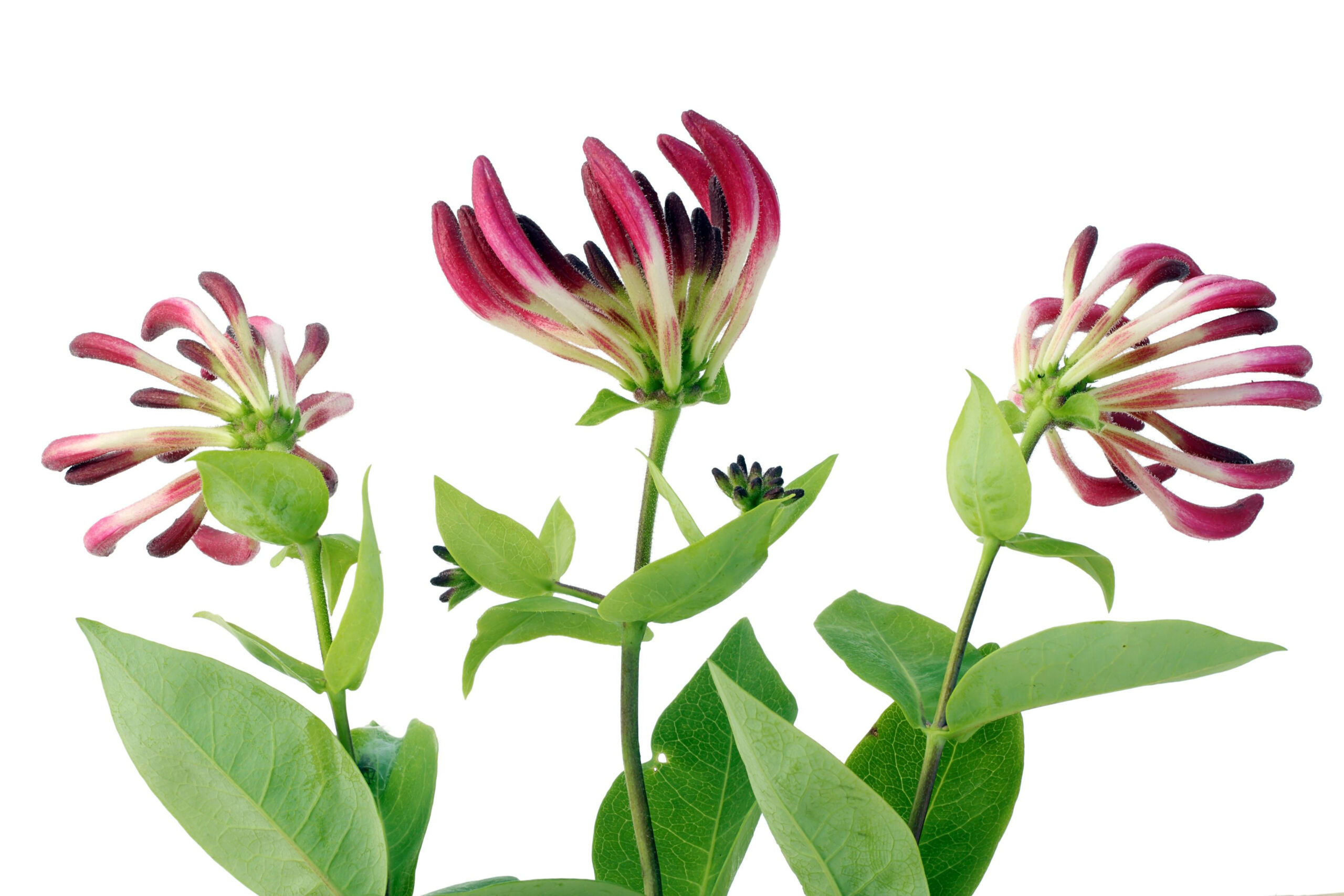
Thank you, Donnie
Blessings to you for such valuable information and support.
And the huckleberries?
Thank you for the suggestions.
Do you have a remedy that includes most of these different herbal ingredients?
Thanks for your inquiry Mollie. Donnie Yance formulated a product for Natura Health Products called Flew Away that contains many of the ingredients listed in his herbal remedies blog.